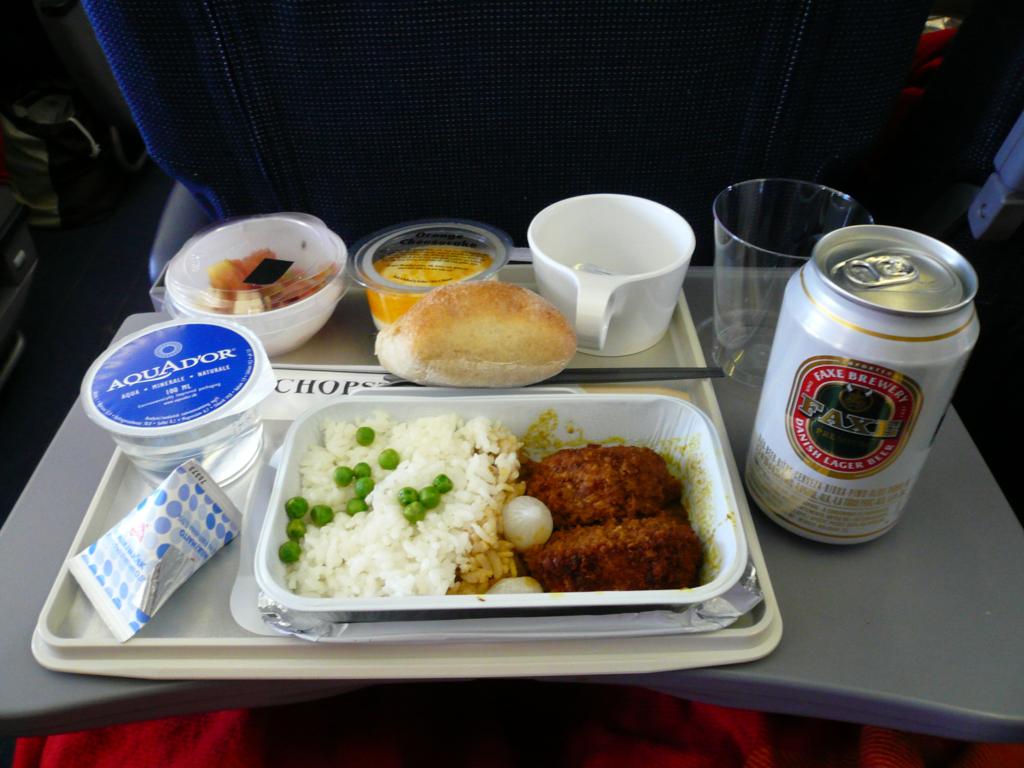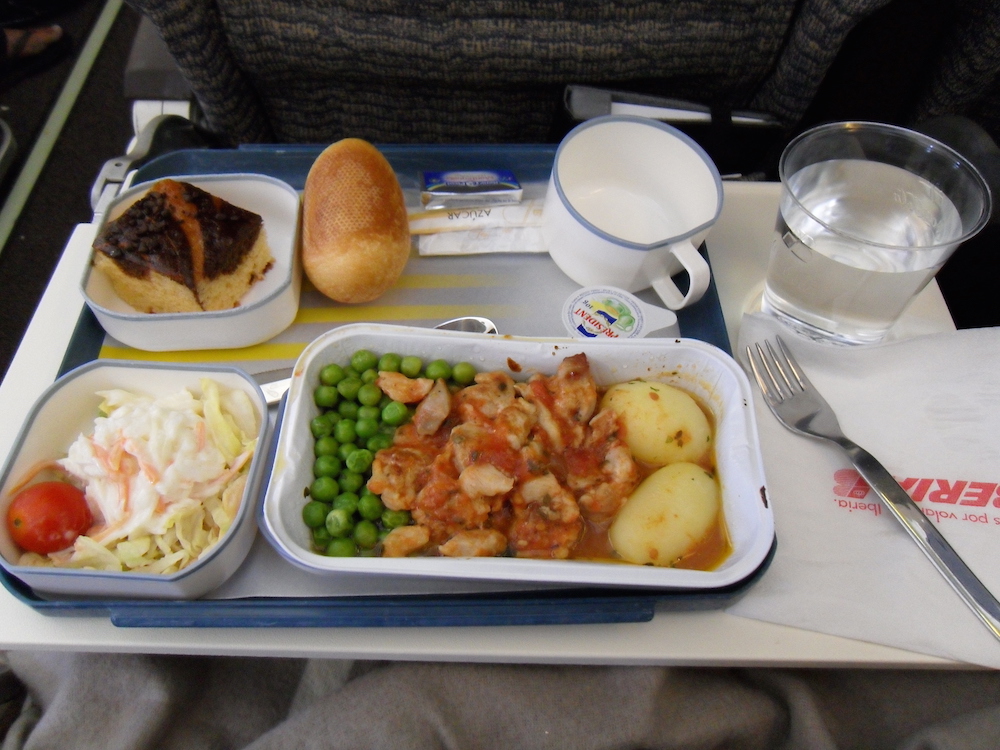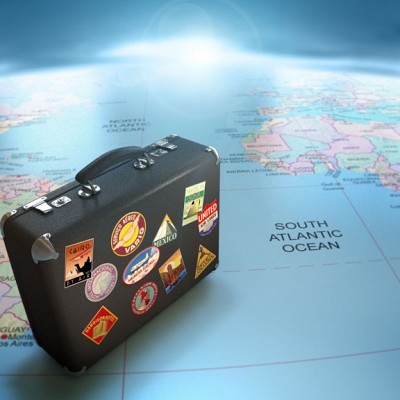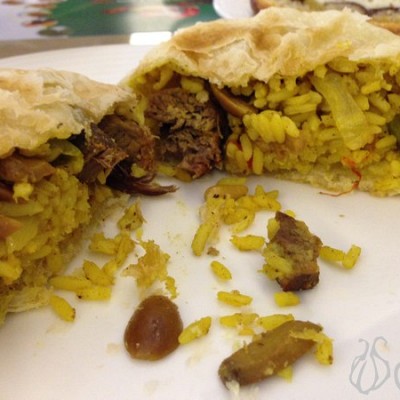If you think the food airline companies serve up is bland or unappetising, it’s not necessarily their fault. Essentially, you leave your normal sense of taste behind at the airport departure gate. Get on board a plane and cruise to a level of thousands of feet, and the flavour of everything from a pasta dish to a mouthful of wine becomes manipulated in a whole host of ways that we are only beginning to understand.
Taste buds and sense of smell are the first things to go at 30,000 feet, says Russ Brown, director of In-flight Dining & Retail at American Airlines. “Flavour is a combination of both, and our perception of saltiness and sweetness drop when inside a pressurised cabin.”
Everything that makes up the in-flight experience, it turns out, affects how your food tastes. “Food and drink really do taste different in the air compared to on the ground,” says Charles Spence, professor of experimental psychology at Oxford University. “There are several reasons for this: lack of humidity, lower air pressure, and the background noise.”

Dryness and low pressure
When you step on an aeroplane, the atmosphere inside the cabin affects your sense of smell first. Then, as the plane gets higher, the air pressure drops while humidity levels in the cabin plummet. At about 30,000 feet, humidity is less than 12% – drier than most deserts.
The combination of dryness and low pressure reduces the sensitivity of your taste buds to sweet and salty foods by around 30%, according to a 2010 study conducted by Germany's Fraunhofer Institute for Building Physics, commissioned by German airline Lufthansa. To investigate this the researchers used a special lab that reduced air pressure simulating cruising at 35,000 feet (10.6km) – as well as sucking moisture out of the air and simulating the engine noise. It even made seats vibrate in its attempts to mimic an in-flight meal experience.
Interestingly, the study found that we take leave of our sweet and salty senses only. Sour, bitter and spicy flavours are almost unaffected.
But it’s not just about our taste buds. Up to 80% of what people think is taste, is in fact smell. We need evaporating nasal mucus to smell, but in the parched cabin air our odour receptors do not work properly, and the effect is that this makes food taste twice as bland.
So airlines have to give in-flight food an extra kick, by salting and spicing it much more than a restaurant on the ground ever would. “Proper seasoning is key to ensure food tastes good in the air,” says Brown at American Airlines. “Often, recipes are modified with additional salt or seasoning to account for the cabin dining atmosphere.”
Gerry McLoughlin, executive chef at rival US airline United, says he has to use “vibrant flavours and spices” to make in-flight meals taste “more robust”.
He and his fellow chefs also have the constant loud humming of the jet engines to contend with. While you may think that flavour is influenced by your nose and mouth, psychologists are now finding that your ears can also play a part. (For more on this, see this video and try out a taste experiment) A study found that people eating to the sound of loud background noise rated food as being less salty and less sweet than those who ate in silence. Another twist: to those surrounded by noise, food surprisingly appeared to sound much crunchier.
However, a plane’s loud background noise of around 85db does not affect all tastes equally, says Spence. For example, seasonings like cardamom, lemon grass and curry taste more intense in the sky than salt or sugar.
Mass-produced recipes
It’s not just the in-cabin conditions that have to be taken into account. Preparing and serving tasty food for a few hundred people above the clouds is not an easy task. Because of food safety standards, all meals must be cooked on the ground. There the food is packed, blast-chilled, refrigerated, and finally must survive re-heating in the air. All of this would modify the flavour even if it was served at sea level.
To re-heat food on board, for safety reasons nearly all airlines use convection ovens, which blow hot, dry air over the food. Microwaves and open flames are not allowed, although the first induction ovens are now on the market.
“Airline chefs are unique in that they mass produce recipes for thousands of customers,” says Brown. “Many times the final product is not what was originally envisioned due to things outside their control. We design food with ingredients and packing we know can survive the long process between food preparation and delivery.”
Recently fashionable ways of cooking like sous-vide – where the food is cooked in a sealed plastic bag for a long time at a relatively low temperature - also help making in-flight food taste better, says Pam Suder-Smith, president of the International Flight Services Association.
So to improve the quality of airline food, airlines are beginning to experiment with testing meals in pressurised environments or aboard actual aircraft to replicate what passengers will experience.
Simulated cabin
“You can’t use the same recipes for airline meals that you would use on the ground,” says David Margulies of Sky Chefs, a company specialising in catering for airlines. “But that doesn’t mean that meals served on airplanes can’t taste just as good. Our executive chefs have mastered the art and science of adapting recipes to changes in how food tastes at high altitudes.”
So far, this proves true mostly for meals in first and business class, though. “Coach meals may be less elaborate,” he concedes.
The umami notes of tomato juice seems stronger in the air than on the ground (Getty Images)
For First and Business class, Sky Chefs employ a team of executive chefs who work with airline customers – and use state-of-the-art kitchens, similar to those in a restaurant. Most meals are then placed in special carts and kept chilled until they are re-heated during the flight. “They are prepared in a manner that takes the re-heating process into account so they are not overcooked,” says Margulies.
Airlines keep finding better ways to research food preparation at altitude. Singapore Airlines, for instance, works closely with their in-flight catering provider, SATS, which has a simulated aircraft cabin at their in-flight catering centre at Singapore Changi Airport, where meals are cooked and tested under low-pressure conditions. “It enables us to replicate the conditions of a flight at 35,000 feet and our airline has developed many in-flight dishes based on research conducted in this facility," says a Singapore Airlines spokesperson.
Nasal sprays
Some of our senses, however, are unaffected by altitude, especially the so-called fifth taste, umami. It is the pleasantly savoury taste imparted by foods such as sardines, seaweed, mushrooms, tomatoes, and soy sauce. “Umami taste may actually be enhanced by loud background noise,” says Spence.
And because tomatoes are so rich in umami, “this links to people ordering tomato juice and Bloody Mary in the air in a way they never do on ground,” he adds.
Similarly, United’s McLoughlin is using umami-rich ingredients such as spinach, tomatoes and shellfish to enhance in-flight meals.
In a more radical approach, British celebrity chef Heston Blumenthal hoped to help British Airways deliver better in-flight food, by distributing nasal spray to passengers to clear their sinuses before they ate. That approach proved unpopular, though. So Blumenthal resorted to umami, for example with a recipe for shepherd's pie that featured seaweed in the crust.
The champagne you pop at 30,000ft doesn't taste like it does on the ground (Getty Images)
Besides having an umami-rich menu, BA is also introducing soundtracks to match the taste of the food using noise-cancelling headphones, says Spence. Available for first, business and economy, “it is one of the channels on all long-haul flights introduced from November, and it includes both semantic matches such as for example Scottish music for Scottish fish, and more synesthetic matches designed to up sweetness.” Synesthesia is the technical term for evoking a sensation (like taste) through the stimulation of a different sense, in this case hearing.
Some airlines are also investigating whether changing the cutlery might help, because when heavy cutlery is replaced by knives and forks that are light and plastic, it makes food taste worse, says Spence. “And the cheap plastic cups in which we drink our gin and tonic and wine don’t help either.”
‘Thin, tannic and acidic’
Speaking of wine, some varieties, however outstanding on terra ferma, may lose their edge as soon as they are up in the air, says Liam Steevenson, the head of UK wine distributor Red & White, who is also one of the senior wine buyers at grocery chain Waitrose. The company used to supply business-only airline Silverjet for two years with the wine to go with the menu designed by the restaurant Le Caprice. That involved a lot of tasting and assessment of wines on the ground and then in the air, while Steevenson himself worked as a consultant for Silverjet.
“Wines that on the ground taste quite fruity, suddenly taste thin, tannic and acidic,” says Steevenson. “Wines certainly thin out and become much leaner and more structured. Liquids expand and contract according to atmospheric pressure and therefore perhaps this is what is happening to the wine. The mid-palate is tasting less fruity as the pressure changes.”
To deal with the issue, airlines have to select wines that are fruity with low acid and low tannin. “This is not always easy – champagne is high in acid and lots of people want to drink champagne on board,” says Steevenson. “Claret is tannic and sometimes acidic – again lots of business travellers want Bordeaux – so in my mind all these buying decisions have to be made whilst thinking about what will happen to them in the air.”
And because very low humidity changes our palate perceptions, it is “probably best to drink wine early in the flight rather than towards the end, when we have dried out considerably more,” he adds. “As we dry, out taste buds become less effective.”






































